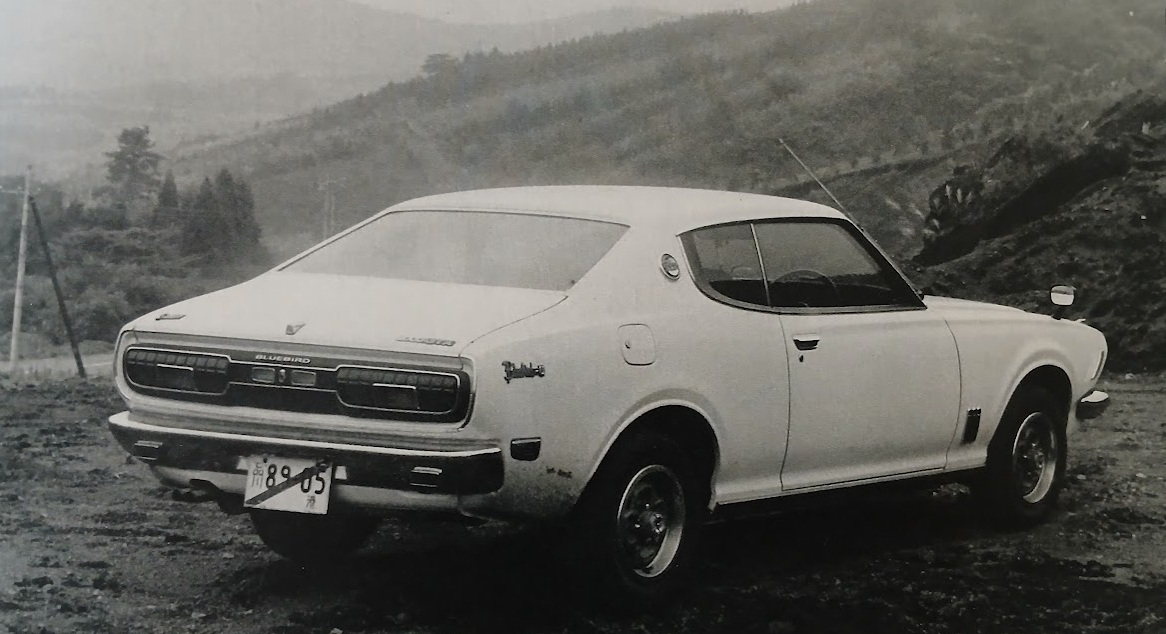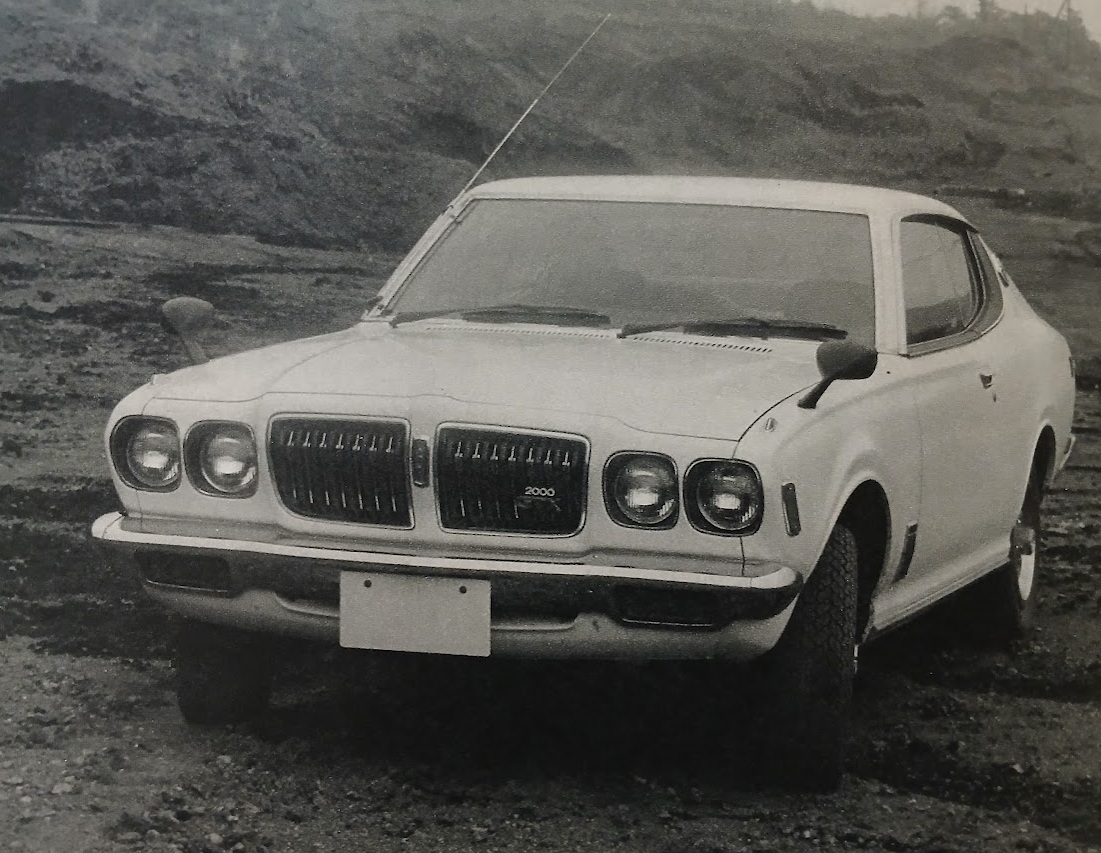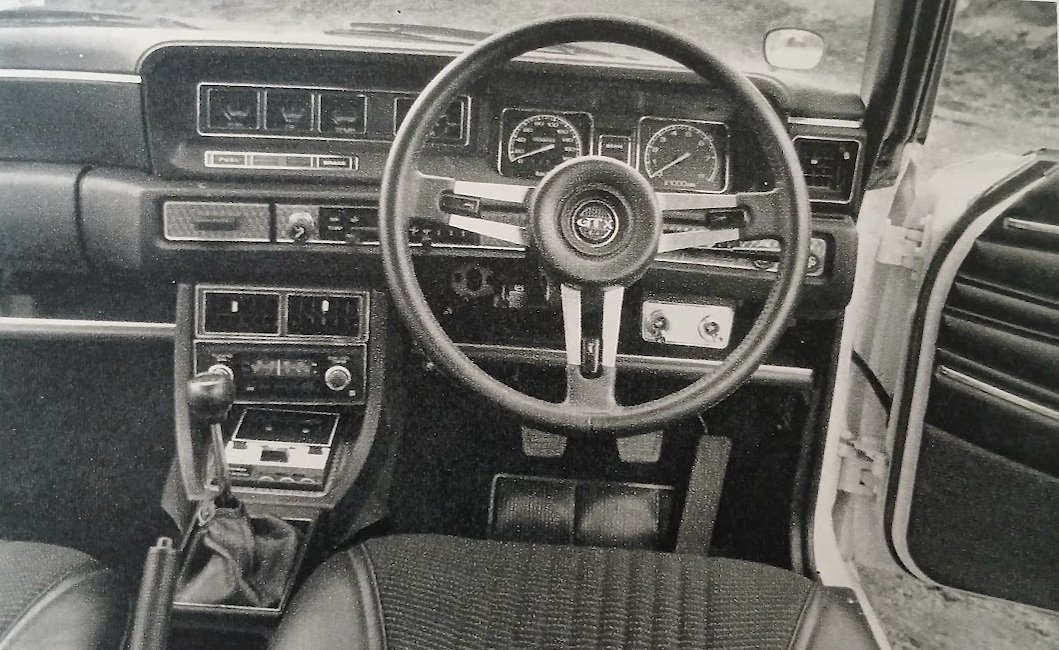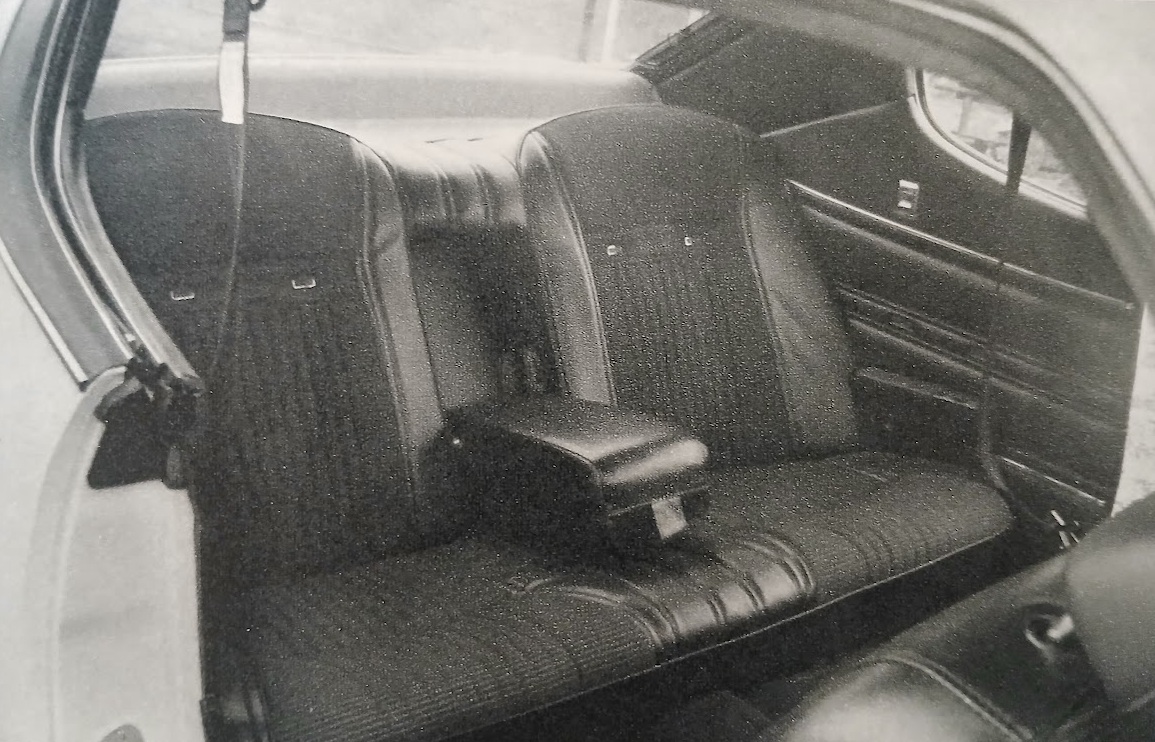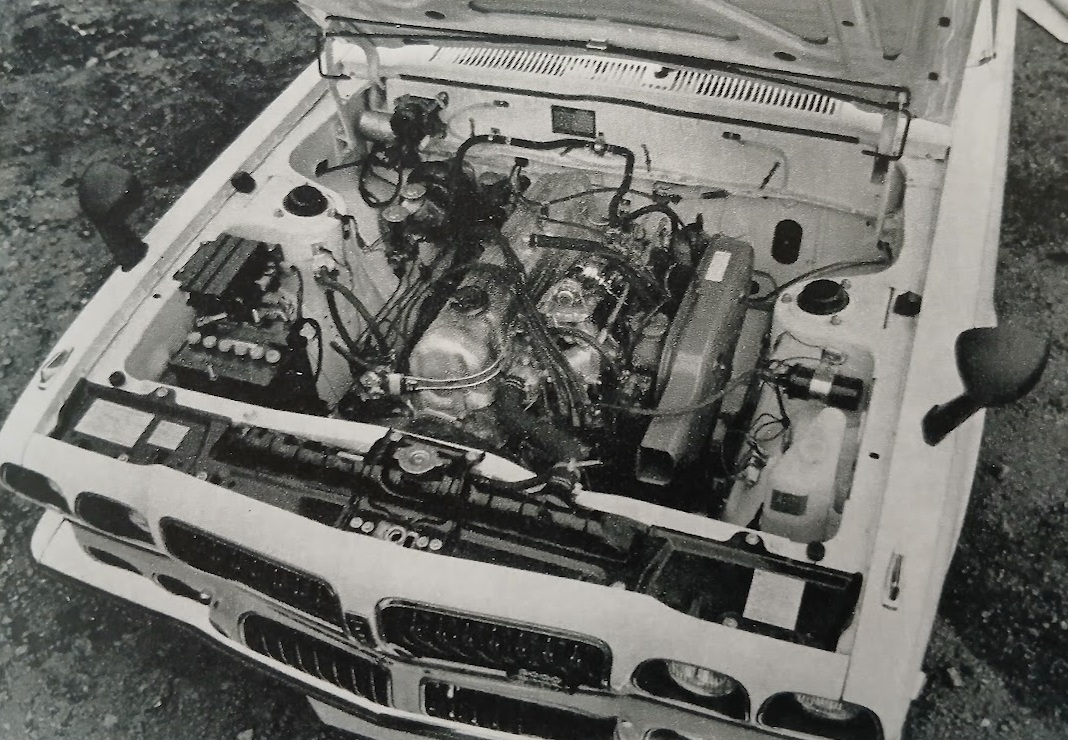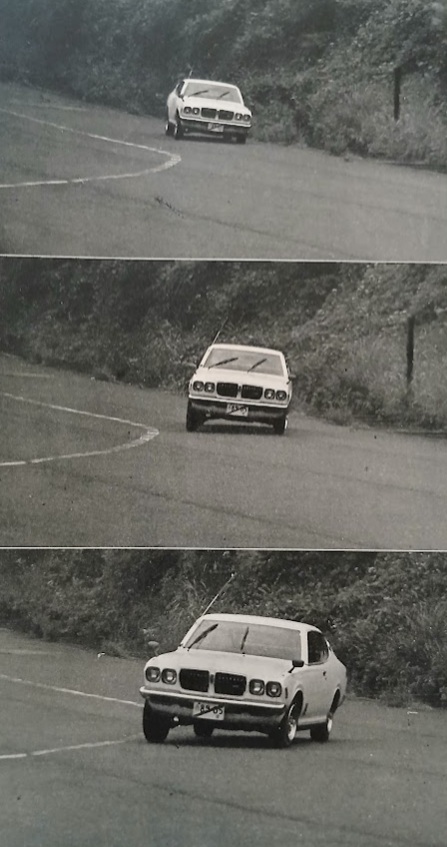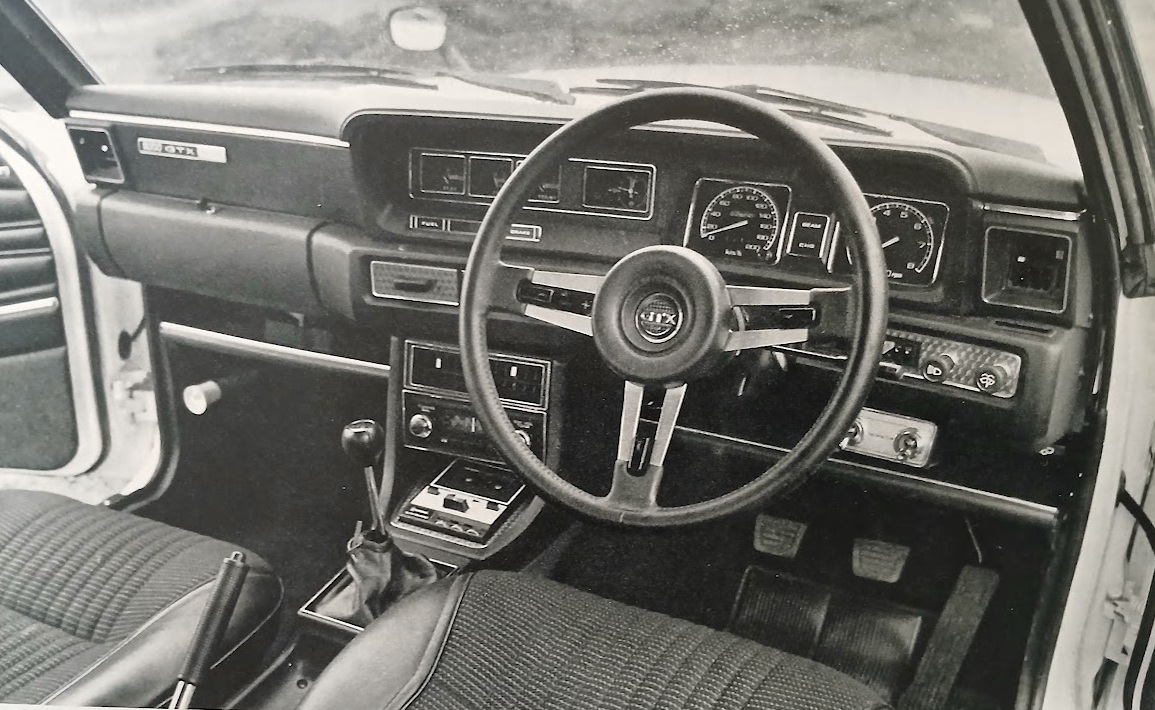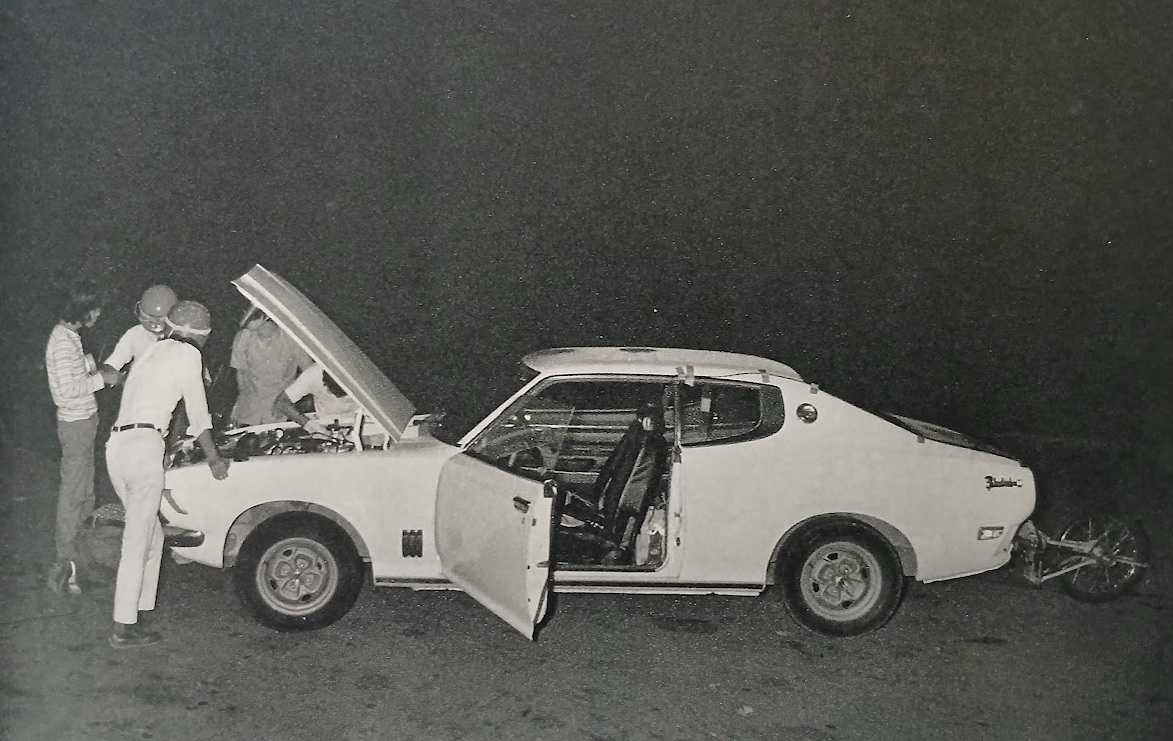Nissan Bluebird U 2000GT-X Hardtop (1973)
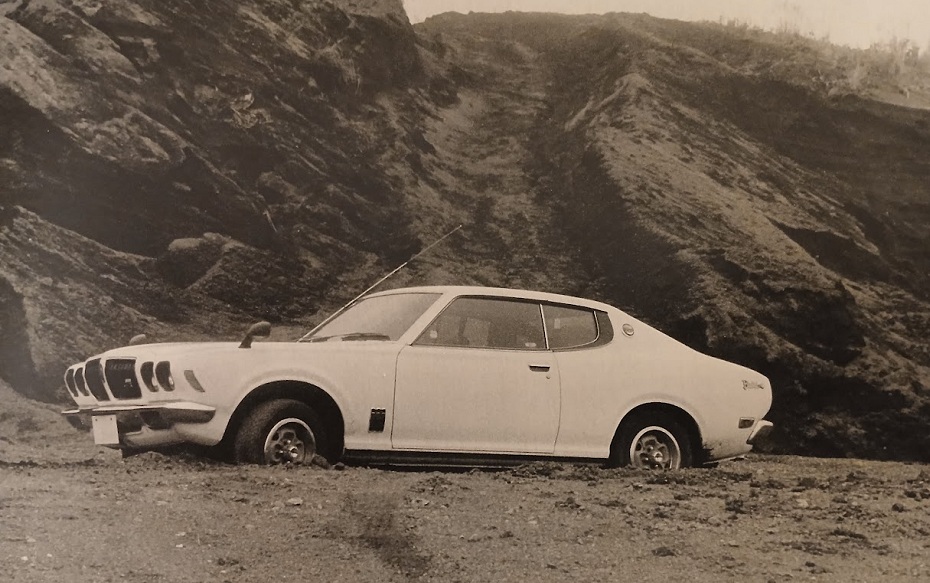
Publication: Car Graphic
Format: Road Test
Date: November 1973
Author: “C/G Test Group” (uncredited)
Road testing the Bluebird U 2000GT-X Hardtop
Why they had to go to the trouble of extending the wheelbase to fit that big, sleepy L20 six-cylinder unit in there is beyond our understanding. This is our honest first impression after testing the Bluebird U 2000GT-X. As explained in detail in this month’s new model introduction, this new Bluebird U GT is based on the body of the Bluebird U that was introduced in August 1971, with an extended nose just like the Skyline GT, and a six-cylinder engine crammed into an engine bay originally intended for a four-cylinder engine.
Based on our experience of testing several 1.6-liter and 1.8-liter Bluebird Us, it didn’t seem necessary to equip the car with a six-cylinder engine. If there was a reason for this, it would be Nissan’s usual commercial policy of installing engines from high-end models that have already proven their worth into top-of-the-line compact cars (the Skyline and Laurel are good examples of this). But if their goal was to bank on the popularity of the so-called “Sky G” and create a Bluebird based on the same formula, it would have been a very easy, predictable, and extremely stale product plan. However, what was somewhat reassuring when we actually drove it was that it has a more balanced chassis than any L20-equipped car we have ever experienced. On the other hand, the power performance was once again disappointing.
The model we tested was the hardtop 2000GT-X, which is the most expensive of the four Bluebird U GT models, with a Tokyo price of 1,028,500 yen. The wheels were fitted with optional 175/HR-14 radial tires (Bridgestone RD102 Wide 70s, in this case), the standard tires are 6.45S-14-4PR bias-ply, and the rim width is 4.5 inches for both.
The first thing you notice when you sit in the driver’s seat is the narrowness of the field of view. The Bluebird U series has a low seating position, and the scuttle, steering wheel, and beltline are relatively high, forcing you into an unnatural driving position, like lying down in a Western-style bathtub and craning your neck to see out. In addition, the six-cylinder version also has a raised engine hood that obstructs the field of view. The scuttle is 20cm further forward than in the four-cylinder model. The top of the instrument panel is long, and it curves toward the driver more than necessary in the middle, so from a relaxed driving position you can’t see the road directly in front of you, let alone the small marker protrusion on the tip of the left front fender. The rear window is also narrow vertically, so rear visibility is poor, and on top of that, the interior is mostly black, making it feel extremely cramped psychologically.
The L20 six-cylinder, 78x69.7mm, 1998cc engine, which is shared with the GX models of the Cedric and Gloria, the Fairlady Z, Skyline GT-X, and Laurel SGX, is equipped with twin SU carburetors and produces 125ps at 6000rpm from a compression ratio of 8.6 (the premium gasoline version produces 130ps, but this is not available in the Bluebird U). As you would expect in the mild, early September weather of our test, it always started on the first twist of the key, and it idles quietly at 750-850rpm. When you step on the light but extremely long-travel clutch, and push the shift lever, which has a too-long stroke (especially from front to back), into first gear and start driving, the immediate impression is that it feels just like a Skyline or Laurel.
This is something we always feel when we drive cars with this engine, but the L-series is definitely becoming more refined, little by little. All the four-cylinder L14/16/18 engines we’ve driven recently have demonstrated this, and the six-cylinder engine is no different. At low speeds below 3000rpm, it’s quiet, smooth, and sufficiently tenacious. If you can keep it going up to 3000rpm in each gear, you can easily lead the flow of city traffic, and once you’ve shifted into fourth gear, you can keep going from there. In fact, at speeds above 40km/h, you can often use fifth gear (1300rpm). Since this engine produces more than 14kgm, or 80% of its maximum torque, over a wide range from 1000rpm to 5800rpm, it doesn’t have a specific range where it is particularly punchy, but rather, it gives the same power everywhere. So, even on the highway, you can keep it in fifth gear unless you have a particular reason not to. However, this desirable quality is limited to the low and medium engine speed range, and once it exceeds 4500rpm, it becomes as rough and noisy as before, which is unbecoming of a six-cylinder engine. The metallic and harsh chattering sound that reaches the ears of those inside the car seems to indicate a problem with the rigidity of the entire powertrain, from the engine to the gearbox.
The scale on the rev counter shows the yellow zone from 6000rpm, and the red zone from 6300rpm, but this is completely unrealistic, and in practice it should be kept around 5000rpm at most. Although the engine itself can physically run to 6500rpm, it requires overcoming a lot of psychological discomfort to do so, and there is no actual top-end power to show for it. It is much smarter to shift up and accelerate in the next higher gear before it becomes noisy. As proof of this, the measured power performance data obtained by running the engine at full throttle up to the redline are all at a disappointing level for a 2-liter class sports car. The test results, measured using an accurate fifth-wheel speedometer, are a maximum speed of 161.9km/h, a 0-100km/h time of 14.0 seconds, and 0-400m and 0-1000m times of 18.3 and 34.6 seconds, respectively.
The engine was not in perfect condition at the time of testing, and it likely would have performed better with some adjustments, but in any case, it wouldn’t change the overall conclusion. For reference, the test results of the Bluebird U 1600 SSS-E tested by C/G last year showed a top speed of 172.4km/h, a 0-100km/h time of 12.4 seconds, and 0-400m and 0-1000m times of 17.5 and 33.0 seconds, respectively, all of which are much faster than the new 2-liter version. When pulled up to 6300rpm, the actual measured speeds in each gear were 49km/h in first gear, 78km/h in second, 123km/h in third, and 159kmh in fourth. In fifth gear, the top speed was reached at 5600rpm, and at this time, the ridiculously optimistic on-board speedometer was pointing to 186km/h, so in that sense, it exceeded the catalog top speed (180km/h).
Incidentally, 100km/h on the speedometer (actual speed, 91km/h) corresponds to 3500rpm in fourth gear and 3100rpm in fifth, and 120km/h (actual speed, 107km/h) corresponds to 3700rpm and 4200rpm, respectively. In practice, 120km/h in fifth gear is probably the limit for comfortable cruising. At this speed, all you can hear from inside the car is a distant, faint exhaust sound. The mechanical noise of the engine, the roar of the gears, and the whir of the tires are almost completely shut out, and the wind noise from the body is also so small that it is almost nonexistent.
Next, regarding maneuverability, in C/G’s previous experience of cars with the L20 type engine, the basic handling characteristics of the car were mostly determined by the L20 itself, which is more than 50kg heavier than the four-cylinder L-series types, and usually manifested as extremely imprecise steering and excessive understeer. This is all probably the result of hanging a large weight on the nose, and of course, the Bluebird U GT is no exception, but what is pleasing is that it has reached a level where it exhibits the most sure-footed behavior among its kind of Nissan cars. One possible reason for this is that it has the widest front tread among the Bluebird U, Skyline, and Laurel series. If we compare the wheelbase, front and tread, overall length, overall height, etc. of each, the front track of the six-cylinder Bluebird is 55mm wider than the four-cylinder version, and 15mm wider than the Skyline/Laurel. The body is slightly smaller than the Skyline GT, and the wheelbase is 40mm longer, which probably makes for a chassis that sits in a somewhat more stable position, as is evident when driving on a winding road with a series of medium-speed corners.
The recirculating-ball steering, which has a ratio of 19.0-22.5:1, has more than four turns from lock to lock, and at low speeds it seems light and imprecise, but as the speed increases it becomes more assured. It still leaves around 10cm of play at the wheel rim when going straight, but once the play ends, the more you turn the steering wheel, the more responsive it becomes, eliciting straightforward reactions from the car. The steering wheel, which is a little too high for the ideal seating position, it just the right size and is comfortable to hold, so it doesn’t feel too busy even when you’re racing through a series of corners. Regardless of the speed, the steering never requires too much effort.
Cornering is characterized by fairly strong understeer. Eventually, the rear wheels break away gently, but only if you deliberately provoke them, and during the test we were only able to experience this in a tight bend at full throttle in second gear. Even using full throttle in third gear in a normal medium-speed corner, you can easily get through it by just feeding in a little more steering angle. The nose is quite heavy, but unlike the Skyline and Laurel, it doesn’t reach the point where the nose pushes wide no matter how much you turn the steering wheel, so it can be said that the car’s handling is basically safe. However, the poor visibility mentioned earlier had the effect of spoiling the benefits of the chassis, and it was difficult to get a sense of the road surface directly ahead, making it difficult to drive.
The good handling is also helped by the tires. The Bridgestone RD201 Wide 70 175/70HR-14 tires that were installed on the test car as optional equipment supported the car well, despite the rim size of 4.5 inches, which is really too small for the weight, and they gripped the road surface without buckling even during very hard cornering. The absolute grip value is not that high for a radial tire, and wet road surfaces were a concern, but the ride was generally soft (the specified high-speed air pressure of 2.0/2.0kg/cm² was used during the test), the noise level was low, and they seemed to be well suited to this chassis. It would be very interesting to see how the Bluebird U GT behaves with the standard 6.45S-14-4PR bias-ply tires.
Even within the Bluebird U GT range, only the highest-performance GT-X with 5-speed gearbox (like the test car) has the so-called “hard” suspension, with spring rates of 2.2kg/mm for the front wheels and 10.7kg/mm for the rear wheels, which are 17% stronger than the standard type at the front and 15% stronger at the rear. The rear dampers are also 59kg on the compression side and 90kg on the rebound side, which is 36% and 40% tighter, respectively, than other Bluebird U GTs (the front dampers are the same for all models). The diameter of the stabilizer is also 21mm for the GT-X, compared to the standard 19mm. However, even with this “hard” suspension, the ride is actually very soft, and you only feel sharp up and down movements when passing over pronounced bumps in the pavement, and at high speeds, the strength of the dampers actually seems insufficient.
Apart from the unpleasantly elastic pedal feel, the brakes are effective, the servo is powerful, and they work smoothly. There is very little nose dive, and the rear wheels hardly lock up even during panic stops. We weren’t able to conduct our usual fade resistance test, but the brakes worked consistently even on a fairly long downhill stretch, so it should be sufficient for practical purposes. The handbrake warning light, which flashes on and off like in some European cars, is a bit of an eyesore.
The interior equipment is pretty much what you would expect from a high-end Japanese car. In addition to the standard gauges including a rev counter and oil pressure gauge, the front end of the center console has an AM/FM radio and cassette tape player, and there are even knobs to remotely control the left and right fender mirrors at the bottom right of the dash. A heated rear window is of course standard equipment. All the side windows are electric, and when the lights are turned on, the switch knobs also glow a soft green. There is an overhead console, which is not uncommon these days, but we were impressed that even the GT-X emblem on the glove box lid was illuminated at night.
There are many excellent four-cylinder engines (e.g., BMW’s) which show that six cylinders are not necessary for a practical engine of only about 2 liters, but there is no point in saying that here. For people who want the L20 engine for some reason, the Bluebird U 2000GT is a better buy than the Skyline GT or the six-cylinder Laurel, mainly in terms of its overall balance. Of course, it is not light enough for truly sporty driving, but its strengths are its quietness at low speeds and its ample torque, so the best choice in C/G’s view is the 3-speed automatic transmission model (35,000 yen extra, with the standard suspension specification), and of course it is preferable to add the optional wide radials. The overall average fuel economy during this test was 8.4km/l (on regular gasoline), and 10.8km/l when driving on the Tomei Expressway, mostly in fifth gear, occasionally dropping to fourth gear, at around 100km/h.
Postscript: Story Photos
